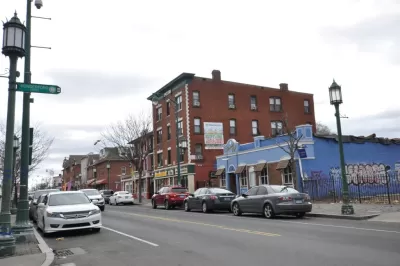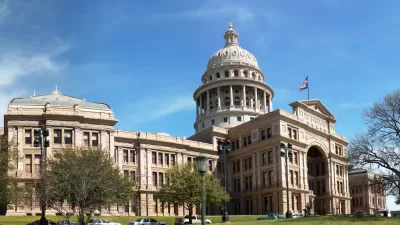The state of Connecticut deploys almost all of its federal housing funding in impoverished communities, according to this bombshell investigatory report.

Jacqueline Rabe Thomas reports from Connecticut as an example of how policy uses low-income housing tax credits to erect pockets of poverty.
"[Connecticut] officials have chosen, year after year, to direct the bulk of public funding for affordable housing to Connecticut’s most impoverished communities," writes Thomas. "Since the mid-1980s, almost $2.2 billion in low-income housing tax credits have been awarded to construct 27,000 affordable housing units in the state. Just 10% were built in prosperous towns, an investigation by The Connecticut Mirror and ProPublica has found."
Some 80 percent of that funding was spent in struggling communities in Connecticut, making it an outlier among a national average which tends toward spending low-income housing money in impoverished areas. "In a recent federal study [pdf] of 21 states, it had the second highest concentration of affordable housing in high-poverty neighborhoods, behind only Mississippi," according to Thomas.
The article traces the systematic origins of these outcomes in Connecticut (e.g., "The state requires developers to obtain local zoning approval before they even apply for a tax credit, a practice that has been flagged by federal regulators as potentially discriminatory) and also the consequences of the pattern for the residents living in subsidized housing in these low-income communities.

Alabama: Trump Terminates Settlements for Black Communities Harmed By Raw Sewage
Trump deemed the landmark civil rights agreement “illegal DEI and environmental justice policy.”

Planetizen Federal Action Tracker
A weekly monitor of how Trump’s orders and actions are impacting planners and planning in America.

Why Should We Subsidize Public Transportation?
Many public transit agencies face financial stress due to rising costs, declining fare revenue, and declining subsidies. Transit advocates must provide a strong business case for increasing public transit funding.

Understanding Road Diets
An explainer from Momentum highlights the advantages of reducing vehicle lanes in favor of more bike, transit, and pedestrian infrastructure.

New California Law Regulates Warehouse Pollution
A new law tightens building and emissions regulations for large distribution warehouses to mitigate air pollution and traffic in surrounding communities.

Phoenix Announces Opening Date for Light Rail Extension
The South Central extension will connect South Phoenix to downtown and other major hubs starting on June 7.
Urban Design for Planners 1: Software Tools
This six-course series explores essential urban design concepts using open source software and equips planners with the tools they need to participate fully in the urban design process.
Planning for Universal Design
Learn the tools for implementing Universal Design in planning regulations.
Caltrans
Smith Gee Studio
Institute for Housing and Urban Development Studies (IHS)
City of Grandview
Harvard GSD Executive Education
Toledo-Lucas County Plan Commissions
Salt Lake City
NYU Wagner Graduate School of Public Service




























